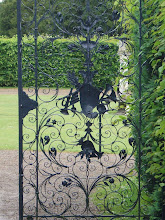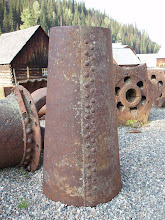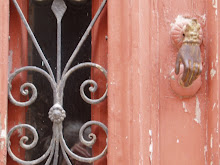One thing that surprised me was their interest in making textures with stamping tools, no other students that I've taught have shown so much interest. I gave them a handout on making your own tools though I didn't have time to demonstrate. I thought I would share these instructions because making your own tools means you are not limited by what a commercial maker is offering.
Tool Tutorial
Tool steel: the cheapest way is to buy tool steel from a steel supplier, get 1/8" or 3/16" stock, medium or high carbon, not mild steel. Large masonry nails can also be used. But the easiest and quickest way is to buy a pack of nail punches in various sizes, from a hardware store and modify them.
Annealing: heat the tip (last 1/2") of the tool until cherry red, let air cool.
Shaping: using fairly coarse files, #0 cut, old ones if you have them as steel will dull your jewellery files quickly, shape the tip into the motif you want. Switch to #2 cut file to refine the shape. Bear in mind that the smaller the shape the easier it will be to stamp it into the metal, curved sides help the stamping process too. Use silicon carbide (wet/dry) sandpaper to sand, finish with 600 grit.
If using tool stock not ready made nail punches, also bevel the the edge of the hammering end of the tool to prevent it mushrooming.
Hardening: heat the tip (last 1/2") rapidly to cherry red, quench in lukewarm water, swirl as you quench, remove quickly. To test for hardness run a file lightly over the hardned portion, it should skip over and not cut.
Clean: sand with wet/dry paper to clean edges of tool so as to see tempering colours clearly.
Tempering: heat slowly, work flame towards tip, watch colours appear on the metal. When straw or golden yellow is right at the tip pull heat away and quench in water. If you miss the colour, go back through hardening stage and then temper again.
Polishing: you can polish the tip with chrome polish.

Here's a pic of a hand stamped piece of silver overlaid with transparent enamel.























No comments:
Post a Comment